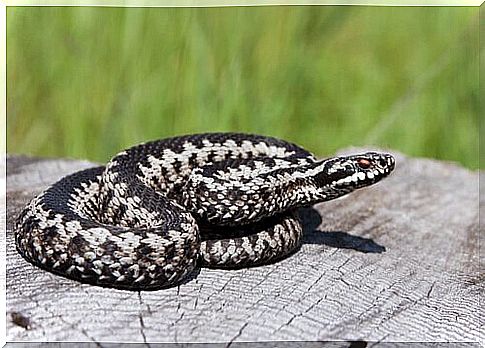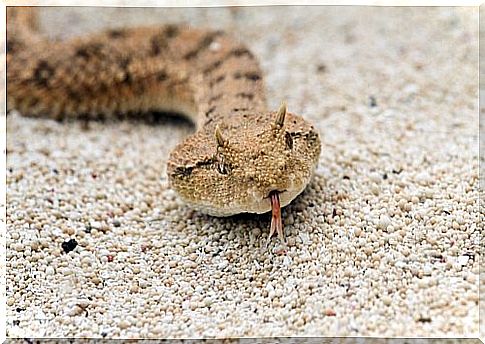Differences Between Snakes And Vipers

In European countries like Spain, snakes face few dangers. Even so, they are still killed on many occasions out of sheer ignorance. Therefore, it is convenient to know the differences between snakes and vipers, which are the main types of snakes in Europe.
Which snakes live in Spain?
In the Iberian Peninsula, we can find about 13 species of snakes : most are harmless, while there are three species of vipers that are venomous. These three species are the Cantabrian viper, the horn and the Pyrenees viper.
Although they are poisonous, they are not considered to be dangerous species: snakes are more afraid of us than we are of them and, therefore, they tend to run away. They will just bite us in accidents, as if we step on them by mistake.
Are vipers dangerous?
There are also two venomous snakes, but they can hardly inoculate large amounts of venom unless we manipulate them.
Furthermore, its venom is not particularly toxic and the fangs that inoculate it are found in the back of the mouth.
So the reason we are interested in the differences between snakes and vipers is that the vast majority of venomous bites are from vipers. There are only 130 bites per year in Spain, and only 1% of these cases end in death.
So it’s safe to say that we shouldn’t worry about a deadly snake bite, at least in Spain.
However, people working in the field need to know the differences between snakes and vipers : this is didactic and can also help in the event of an encounter with these animals.

Differences between snakes and vipers: analyze the head
Knowing the differences between snakes and vipers is simple in theory. The problem is that we usually don’t see these animals in the best visibility conditions, so it’s important to pay special attention.
One of the main differences between snakes and vipers is the eyes: vipers have slanted eyes, with the pupils enlarged vertically.
The pupil of vipers, therefore, resembles that of cats, while snakes have large eyes with a round pupil; which gives them a more affable and human-like appearance.
It should be remembered, however, that the pupils are a part of the eye that adapts to light, so in low-light situations even a viper’s pupil can look round.
However, the scales on the vipers’ heads are small and similar in size to the rest of the body.
Another classic difference between snakes and vipers is the shape of the head, although the latter difference can lead to errors.
While vipers usually have a triangular head, snakes have a more oval head.

Viperina, the snake that thinks it’s a viper
However, there are snakes, such as the viperine snake, that base their defense on resembling a viper and even behave like a viper, so the shape of the head is not always a reliable way to tell them apart.
On the other hand, although they are a little more difficult to assess, snakes are generally slender and have a long, thin tail, while vipers are thicker, with a short, tapered tail.
The zigzag designs are also quite typical of vipers, although the viperine snake presents this aspect to frighten its enemies.
All this information can help you in the event of an accident with a snake, but above all, remember to stay calm.
The vast majority of snakes are not dangerous and do not deserve our counterattacks.









